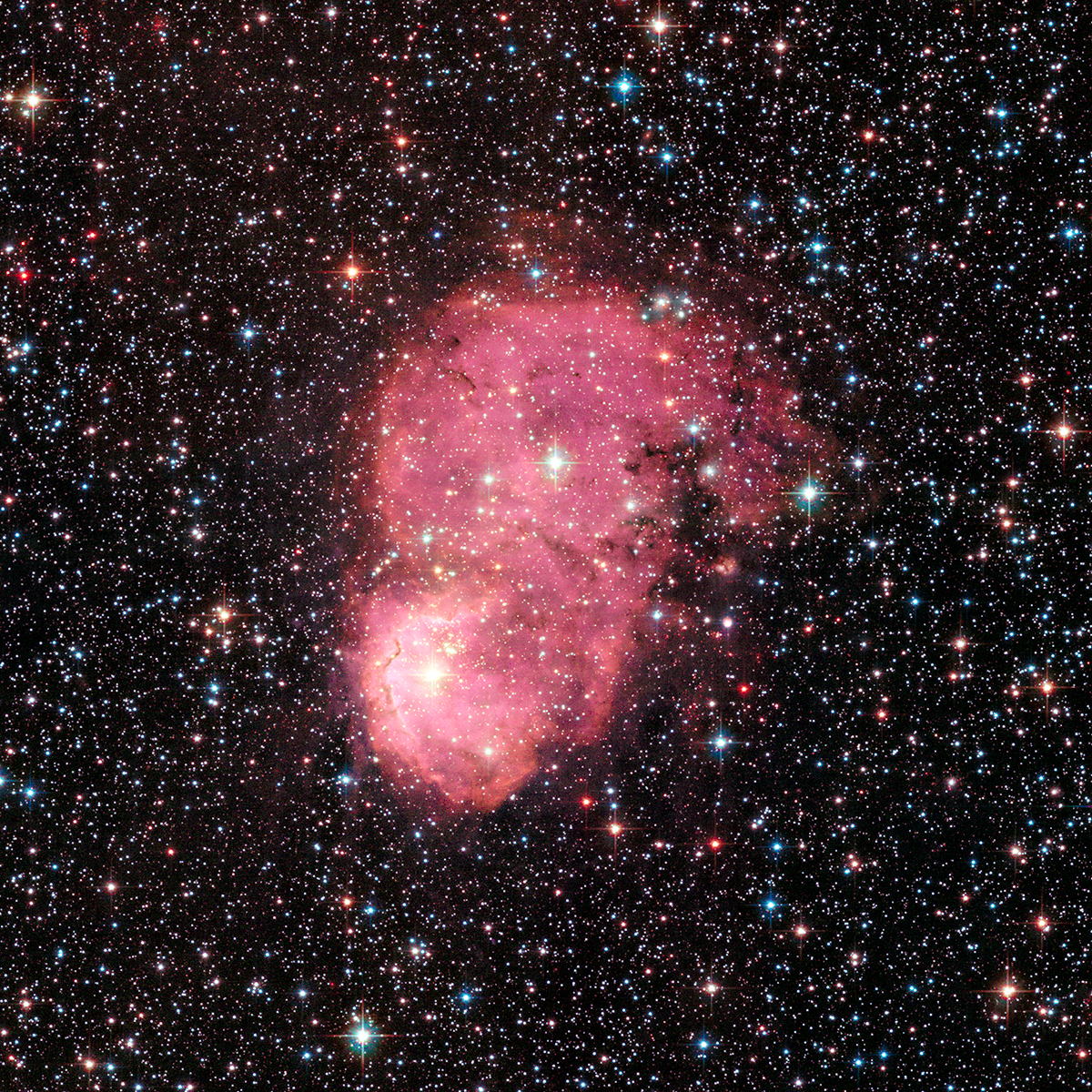Festive Nebulas Make Hubble Telescope's Holidays Bright

Two stunning nebulas shine as one in this colorful view captured by the Hubble Space Telescope and released by NASA just in time for the holidays.
The nebula pair, known collectively as NGC 248, is located in the Small Magellanic Cloud, which is 200,000 light-years from Earth and one of the Milky Way's two dwarf galaxy neighbors.
In addition to boasting festive colors, the nebulas of NGC 248 contain a treasure trove of science for astronomers. This image was captured as part of the Small Magellanic Cloud Investigation of Dust and Evolution (SMIDGE) study, which aims to improve scientists' understanding of the differences in dust in galaxies that have a lower supply of heavy elements needed to actually make that dust. NASA officials wrote in a statement. The Small Magellanic Cloud, for example, has between one-tenth and one-fifth the amount of heavy elements as our Milky Way galaxy. [Space Christmas: Festive Photos of Cosmic Beauty]
Scientists hope Hubble's observations of NGC 248 will help them understand the role of space dust in the early universe.
"It is important for understanding the history of our own galaxy, too," the study's principal investigator, Karin Sandstrom, an assistant professor at the University of California, San Diego's Center for Astrophysics & Space Sciences, said in the NASA statement. "Dust is a really critical part of how a galaxy works, how it forms stars."
Though NASA released the new image Tuesday (Dec. 20), the data used to make the image was collected by Hubble's Advanced Camera for Surveys in September 2015.
The nebulas of NGC 248 were discovered in 1834 by astronomer Sir John Herschel. Together, they cover a region of space 60 light-years long and 20 light-years across; one light-year is the distance light travels in a year (about 6 trillion miles, or 10 trillion kilometers).
Breaking space news, the latest updates on rocket launches, skywatching events and more!
The Hubble Space Telescope has been capturing spectacular images of the universe for more than 26 years. It was launched by NASA in 1990 and is a partnership between NASA and the European Space Agency.
Email Tariq Malik at tmalik@space.com or follow him @tariqjmalik and Google+. Follow us @Spacedotcom, Facebook and Google+. Original article on Space.com.

Tariq is the award-winning Editor-in-Chief of Space.com and joined the team in 2001. He covers human spaceflight, as well as skywatching and entertainment. He became Space.com's Editor-in-Chief in 2019. Before joining Space.com, Tariq was a staff reporter for The Los Angeles Times covering education and city beats in La Habra, Fullerton and Huntington Beach. He's a recipient of the 2022 Harry Kolcum Award for excellence in space reporting and the 2025 Space Pioneer Award from the National Space Society. He is an Eagle Scout and Space Camp alum with journalism degrees from the USC and NYU. You can find Tariq at Space.com and as the co-host to the This Week In Space podcast on the TWiT network. To see his latest project, you can follow Tariq on Twitter @tariqjmalik.
